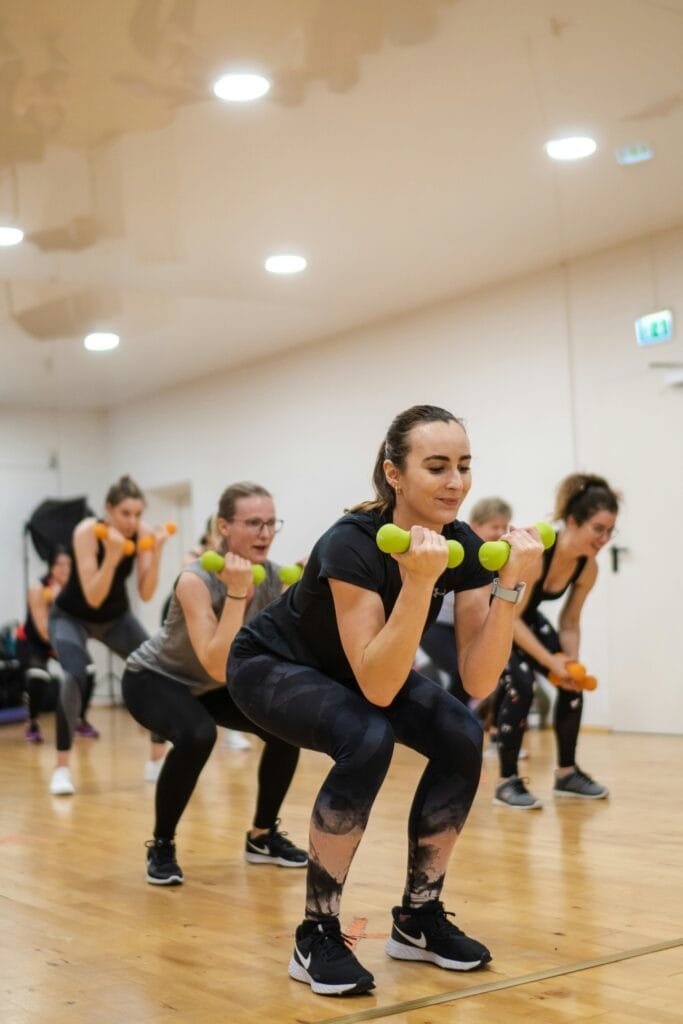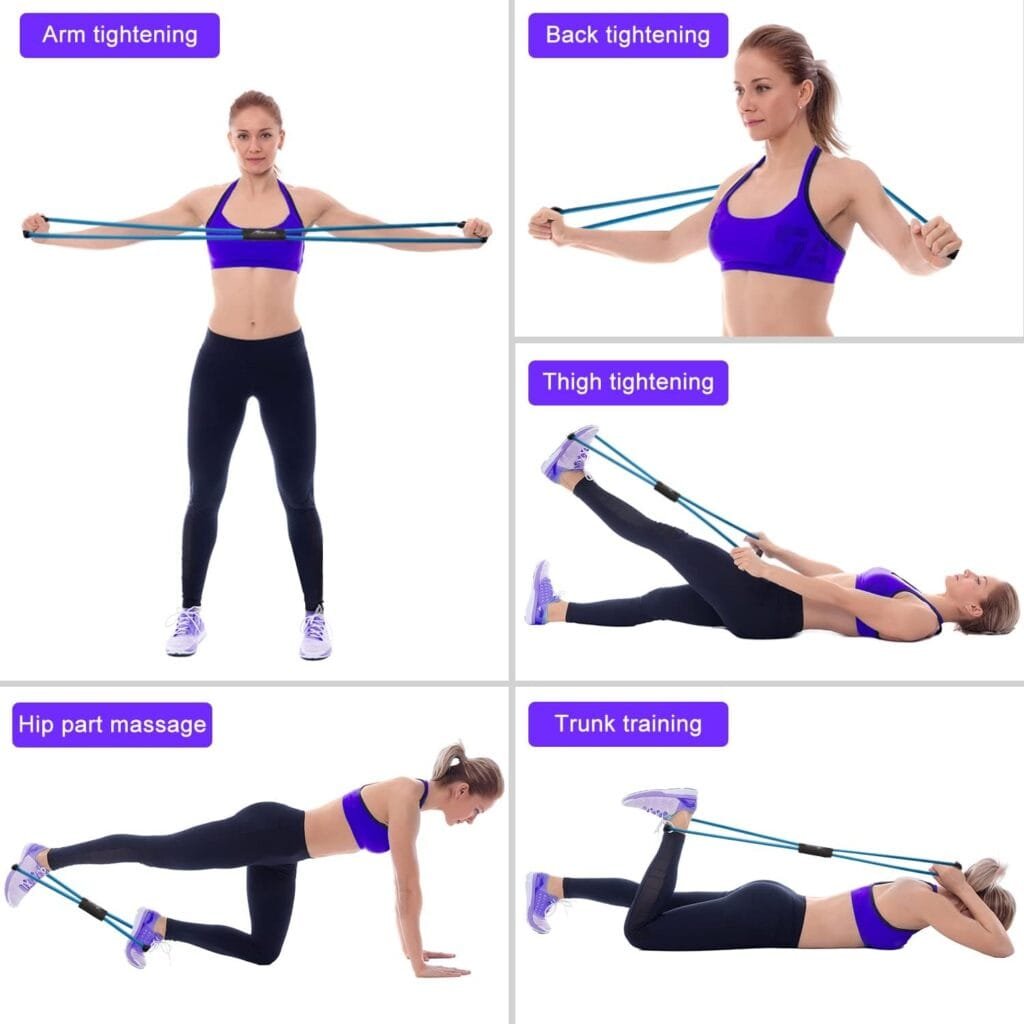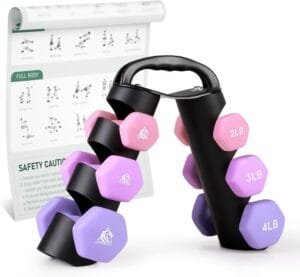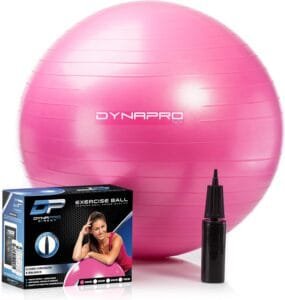Did you know that incorporating strength training in your routine can preserve muscle performance even decades later? Jacqueline Hooton, a 61-year-old fitness coach, is a testament to this fact, having started strength training in her mid-thirties.
As women age, maintaining muscle mass becomes crucial for overall health and independence. By engaging in exercises that target different muscle groups, women can improve their overall muscle strength and functionality, enabling them to look fit as they age and boost their overall well-being.
Key Takeaways
- Strength training preserves muscle performance over time.
- Maintaining muscle mass is crucial for women’s health as they age.
- Targeted exercises can improve overall muscle strength and functionality.
- Engaging in strength training can enhance overall well-being.
- It’s never too late to start strength training and see benefits.
The Power of Female Muscle: Understanding Your Strength Potential
Women’s strength training has evolved, and understanding the intricacies of female muscle physiology is key to maximizing strength potential. Studies have shown that women can build muscle just as effectively as men, regardless of their testosterone levels. This fact underscores the importance of tailored training programs that cater to the unique physiological characteristics of women.
Unique Aspects of Female Muscle Physiology
Female muscle physiology differs from male physiology in several key aspects. One of the primary factors influencing muscle development in women is hormonal fluctuations. Hormones play a crucial role in muscle growth and recovery.
Hormonal Influences on Muscle Development
Hormonal changes throughout a woman’s life, such as those experienced during the menstrual cycle or menopause, can significantly impact muscle development and strength. Understanding these hormonal influences is essential for optimizing training and nutrition plans. For instance, certain phases of the menstrual cycle may offer windows of opportunity for more intense training due to higher levels of certain hormones.

Genetic factors also play a significant role in determining muscle strength and growth potential in women. While genetics can influence muscle distribution and overall strength capacity, consistent and well-structured training can help maximize genetic potential. It’s essential for women to focus on progressive overload and proper nutrition to support muscle growth.
By understanding these unique aspects of female muscle physiology, women can better tailor their strength training programs to achieve their strength potential.
Age-Related Muscle Loss: What Every Woman Should Know
Women often encounter a hidden challenge as they age: the gradual loss of muscle mass. This natural process, known as sarcopenia, can significantly impact a woman’s quality of life if not addressed.
Understanding Sarcopenia
Sarcopenia is a condition characterized by the loss of muscle mass and strength as people age. It’s a significant concern for older adults, with one in three adults over 65 experiencing falls each year due to muscle weakness.
How Muscle Loss Progresses by Decade
Muscle loss typically begins in the 30s and accelerates after the age of 50. By understanding this progression, women can take proactive steps to maintain their muscle mass.
| Age Group | Muscle Loss Progression |
|---|---|
| 30-40 | Gradual muscle loss begins |
| 50+ | Muscle loss accelerates |
| 65+ | Increased risk of falls and frailty |
Warning Signs to Watch For
Common warning signs of sarcopenia include decreased strength, reduced mobility, and an increased risk of falls. Recognizing these signs early can help women seek timely intervention.

By understanding the risks associated with age-related muscle loss and taking proactive measures, women can maintain their strength and vitality as they age.
The Science Behind Female Strengthen Muscle at Any Age
The ability to strengthen muscle at any age is backed by a growing body of research. This scientific understanding is crucial for women looking to improve their health and fitness.
Research on Women’s Muscle Development
Studies have shown that strength training can significantly improve bone density, reduce the risk of chronic diseases, and enhance overall health in women. Recent research has focused on the physiological aspects that influence female muscle development.
Latest Studies on Female Strength Training
Research indicates that muscle strengthening exercises for women can be highly effective at any age. Some key findings include:
- Improved muscle mass and strength
- Enhanced bone density
- Better metabolic health
Age-Specific Research Findings
Age-specific studies have revealed that women over 40 can significantly benefit from tailored strength training programs. These programs can help mitigate the effects of sarcopenia and improve overall female fitness.
By understanding the science behind female strength training, women can make informed decisions about their fitness journeys, leveraging the latest research to achieve their goals.
Benefits Beyond Aesthetics: Why Building Muscle Changes Everything
As women embark on their strength training journey, they often discover benefits that extend far beyond aesthetics. Building muscle through women’s weight training can lead to significant improvements in overall health and functionality.
Metabolic Advantages of Increased Muscle Mass
Increased muscle mass through female muscle development can have a profound impact on metabolism. This is evident in two key areas:
Boosting Your Resting Metabolic Rate
More muscle mass means a higher resting metabolic rate, helping the body burn more calories at rest.
Improved Insulin Sensitivity
Strength training enhances the body’s ability to manage blood sugar levels effectively.
Bone Health and Injury Prevention
Beyond metabolic benefits, building muscle also supports bone health and reduces the risk of injury. This is achieved through:
Reducing Osteoporosis Risk
Strengthening muscles and bones together reduces the risk of osteoporosis.
Joint Protection Through Muscle Support
Stronger muscles around the joints provide better support and reduce the risk of injury.
By focusing on female muscle development through women’s weight training, women can replace fat with muscle, leading to a more toned physique and improved overall health.
Starting Your Strength Journey: Beginner’s Guide for Women
Women of all ages can boost their muscle strength and overall health by starting a well-structured strength training program. The key to a successful journey is understanding the basics and setting up a conducive training environment.
Essential Equipment for Home Training
For those who prefer training at home, investing in the right equipment is crucial. Minimal investment options can include resistance bands, dumbbells, and a stability ball. These tools are versatile, affordable, and can be used for a variety of exercises.
Minimal Investment Options
- Resistance bands: Lightweight and portable, ideal for strength training on the go.

- Dumbbells: Adjustable dumbbells are a great space-saving option for home training.

- Stability ball: Enhances core strength and improves balance.

Creating an Effective Home Gym
To create an effective home gym, consider the space available and the type of exercises you plan to do. A well-organized space not only motivates but also ensures safety during workouts. Start with the basics and gradually add more equipment as you become more comfortable with your routine.
Gym-Based Options for Maximum Results
For those who prefer the gym environment, there are numerous benefits, including access to a wide range of equipment and professional guidance. Navigating the weight room confidently is key to a productive workout session.
Navigating the Weight Room Confidently
Understanding the layout of the gym and familiarizing yourself with the equipment can significantly reduce intimidation. Start with machines that target specific muscle groups and gradually move to free weights as you gain confidence.
Working with Trainers and Classes
One of the advantages of gym-based training is the opportunity to work with personal trainers or join group classes. These options provide personalized guidance and motivation, helping you to achieve your strength training goals more effectively.
By choosing the right training environment and equipment, women can successfully start their strength training journey and enjoy the numerous benefits that come with it.
Core Exercises to Build and Strengthen Female Muscle
Effective muscle building for women involves understanding the importance of core exercises and how they contribute to overall muscle strength. Core exercises are the foundation of a strong and healthy physique, enabling women to perform daily activities with ease and confidence.
Compound Movements for Maximum Efficiency
Compound exercises are crucial for building strength and muscle mass efficiently. These exercises work multiple muscle groups simultaneously, providing a comprehensive workout.
Squats and Deadlifts: The Foundation
Squats and deadlifts are among the most effective compound exercises for women. They target major muscle groups in the legs, glutes, and lower back, laying the foundation for overall muscle strength.
Upper Body Compound Exercises
In addition to lower body exercises, upper body compound movements like push-ups, rows, and presses are essential for a balanced physique. These exercises help build strength in the arms, shoulders, and chest.
Isolation Exercises for Targeted Development
While compound exercises provide a broad stimulus for muscle growth, isolation exercises allow for targeted development. These exercises help address specific areas of concern, such as the biceps, triceps, or abdominal muscles.
Problem Areas and Focused Solutions
Isolation exercises can be particularly useful for addressing problem areas. For example, women can use bicep curls to tone their arms or leg extensions to strengthen their legs.
Creating Balance in Your Physique
| Exercise Type | Muscle Group | Benefits |
|---|---|---|
| Compound Exercises | Multiple muscle groups | Efficient muscle building, overall strength |
| Isolation Exercises | Specific muscle groups | Targeted development, addressing problem areas |
Progressive Training: How to Continuously Challenge Your Muscles
To achieve continuous muscle growth and strength gains, it’s essential to understand the principles of progressive training. Progressive training is a cornerstone of effective strength training, enabling women to challenge their muscles progressively and achieve lasting results.
Understanding Progressive Overload
Progressive overload refers to the gradual increase in weight, resistance, or reps over time to continue making gains in strength and muscle mass. This principle is fundamental to women’s strength training, as it ensures that the muscles are continually challenged.
Methods Beyond Adding Weight
While adding weight is a common method of progressive overload, it’s not the only way. Other methods include increasing the number of repetitions or sets, decreasing rest time between sets, or improving the quality of the exercise itself.
Tracking Your Progress Effectively
To implement progressive overload effectively, it’s crucial to track your progress. This can be done through a training log, where you record the exercises, weights, and reps. Regularly reviewing your progress helps in planning the next steps in your training.
Periodization for Long-Term Success
Periodization involves structuring your training into cycles to maximize long-term gains and prevent plateaus. This approach allows for variations in intensity and volume, ensuring that the body is continually challenged.
Creating Cycles in Your Training
Cycles can be based on specific goals, such as strength gain or endurance. By alternating between high-intensity and low-intensity phases, you can optimize your training and recovery.
When to Push and When to Recover
Understanding when to push your limits and when to recover is crucial. Listening to your body and allowing adequate recovery time is essential for muscle repair and growth.
Nutrition to Fuel Muscle Growth in Women
A well-balanced diet is essential for women looking to build muscle and enhance strength. Nutrition plays a critical role in fueling muscle growth, and understanding the right nutritional requirements can make a significant difference in a woman’s fitness journey.
Protein Requirements for Female Muscle Development
Adequate protein intake is crucial for muscle growth and recovery. Women aiming to build muscle should consume between 1-1.6 grams of protein per kilogram of body weight daily.
Calculating Your Personal Needs
To determine your specific protein needs, consider your weight, activity level, and fitness goals. For example, a 150-pound woman (approximately 68 kg) would require about 68-109 grams of protein per day.
Best Sources for Quality Protein
Quality protein sources include lean meats, fish, eggs, dairy products, and plant-based options like legumes and tofu. Incorporating a variety of these into your diet can help meet your protein needs.
Essential Nutrients for Strength and Recovery
Beyond protein, other essential nutrients play a vital role in muscle growth and recovery. These include micronutrients that support overall health and performance.
Micronutrients That Support Muscle Growth
- Iron: Crucial for transporting oxygen to muscles.
- Calcium: Essential for bone health and muscle function.
- Vitamin D: Important for bone health and immune function.
Hydration and Electrolyte Balance
Adequate hydration is vital for physical performance and recovery. Electrolytes like sodium, potassium, and magnesium help maintain fluid balance and support muscle function. Ensuring proper hydration and electrolyte balance can enhance your workout performance and aid in recovery.
Replacing Fat with Muscle: Strategies for Body Recomposition
Replacing fat with muscle is a multifaceted process that involves strength training, nutrition, and cardio strategies. To achieve a leaner, stronger physique, women must focus on body recomposition, a process that goes beyond mere weight loss.
The Truth About “Toning” vs. Building Muscle
Many women aim to “tone” their muscles, but the reality is that muscle toning is a result of building muscle mass and reducing body fat. Understanding this distinction is crucial for effective body recomposition.
Understanding Body Composition Changes
Body composition refers to the percentage of body fat compared to lean body mass. Changes in body composition can significantly impact overall health and appearance.
Setting Realistic Expectations
It’s essential to set realistic goals and timelines for body recomposition. This process takes time, patience, and consistent effort.
Combining Strength Training with Strategic Cardio
A well-rounded fitness program that includes both strength training and strategic cardio is key to successful body recomposition. Strength training helps build muscle, while cardio aids in fat loss.
HIIT vs. Steady-State for Fat Loss
High-Intensity Interval Training (HIIT) and steady-state cardio are both effective for fat loss, but they have different benefits. HIIT is time-efficient and can be more effective for fat loss, while steady-state cardio is better for cardiovascular health.
Creating the Optimal Weekly Schedule
To achieve optimal results, it’s crucial to create a balanced weekly schedule that includes both strength training and cardio sessions. This balance ensures that muscle is built and fat is lost efficiently.
Looking Fit at Any Age: Showcasing Your Strength
Looking fit as you age is a journey that combines physical strength, good posture, and a confident attitude. As women age, it’s essential to focus on building strength and maintaining a healthy, toned physique.
Posture and Movement Patterns That Display Strength
Good posture is fundamental to showcasing strength. It not only makes you look more confident but also reduces the risk of back pain and other musculoskeletal issues.
Core Engagement for Elegant Posture
Engaging your core muscles is crucial for maintaining good posture. This involves being mindful of your stance and making a conscious effort to stand tall.
Functional Movement in Daily Life
Incorporating functional movements into your daily routine can significantly enhance your overall strength and agility. Simple actions like carrying groceries or playing with children can be great exercises.
Dressing to Highlight Your Muscle Definition
The way you dress can significantly impact how your strength is perceived. Wearing clothes that fit well and complement your physique can make a big difference.
Wardrobe Choices That Complement Strength
Choosing the right wardrobe can help highlight your muscle definition. Opt for clothes that are fitted and accentuate your toned areas.
Confidence as Your Best Accessory
Confidence is key to showcasing your strength. When you feel strong and capable, it shows in your demeanor and how you carry yourself.
| Tips for Showcasing Strength | Benefits |
|---|---|
| Maintain Good Posture | Reduces back pain, enhances confidence |
| Incorporate Functional Movement | Improves agility, enhances strength |
| Dress to Highlight Muscle Definition | Boosts confidence, accentuates physique |
Conclusion: Your Lifelong Journey to Strength and Vitality
Embracing a lifelong journey to strength and vitality requires commitment, patience, and persistence. As you’ve learned, building and maintaining female muscle strength is crucial for overall health and well-being at any age.
By understanding the unique aspects of female muscle physiology and the benefits of strength training, you can take the first step towards a stronger, healthier you. Whether you’re just starting out or continuing on your fitness journey, remember that every step counts in your quest to female strengthen muscle.
With a well-structured training program, proper nutrition, and a commitment to progressive overload, you can achieve your strength goals and look fit as you age. So, take control of your health and fitness today, and start your journey to a stronger, more vibrant you.
In female strengthen muscle, we find not just physical strength, but also a deeper sense of vitality and confidence that can transform every aspect of our lives. As we conclude this journey, we encourage you to keep pushing forward, celebrating your progress, and embracing the strength that lies within you.
FAQ
What is the importance of strength training for women as they age?
How does female muscle physiology differ from male muscle physiology?
What is sarcopenia, and how can women address it?
What are the benefits of building muscle beyond aesthetics?
What equipment is essential for a home strength training program?
What are compound movements, and why are they important?
How can women progressively challenge their muscles for continuous growth?
What nutritional requirements are necessary for female muscle growth?
How can women combine strength training with cardio for effective body recomposition?
How can women showcase their strength and confidence?
What is the role of protein in female muscle development?
How can women build muscle while losing fat?
Auto Amazon Links: No products found.

